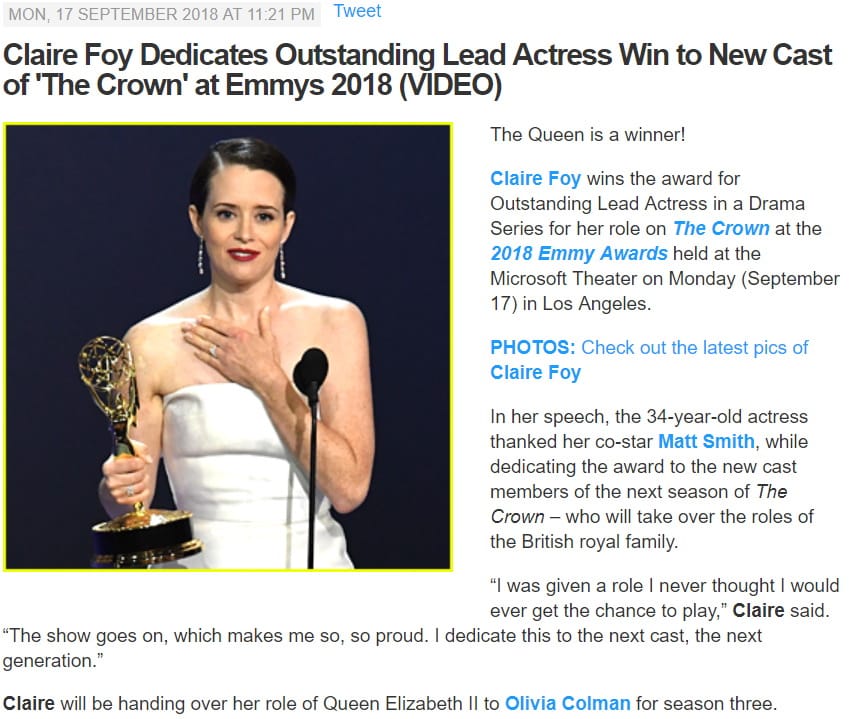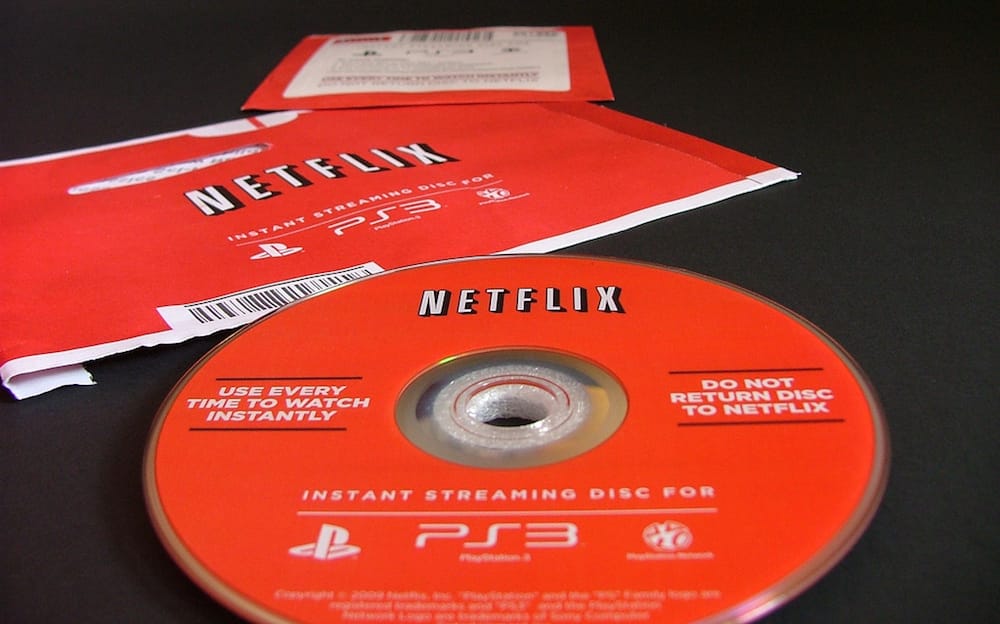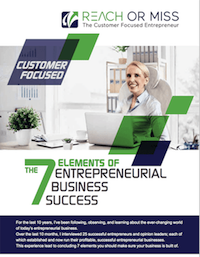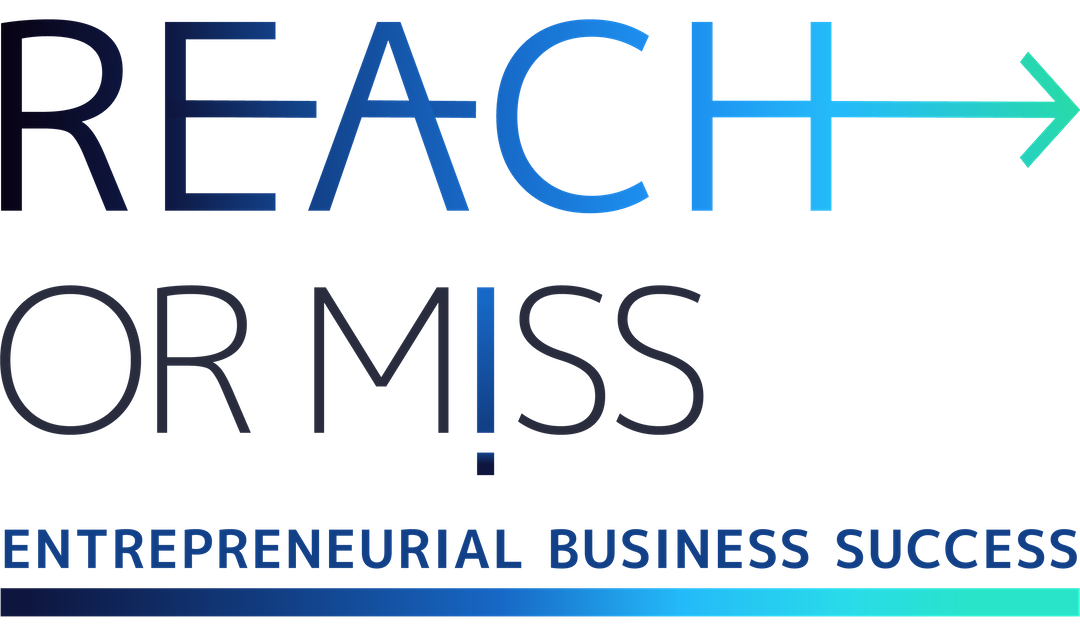“Netflix and The cable channel tied for 23 awards each. It was the first time in almost 20 years that HBO didn’t dominate the Emmy 2018 Awards.”

“Netflix and The cable channel tied for 23 awards each. It was the first time in almost 20 years that HBO didn’t dominate the Emmy 2018 Awards.”
It started in April 14th 1998,
from a small startup – Netflix

“It was the first time in almost 20 years that HBO didn’t dominate the Emmy 2018 Awards. Netflix and The cable channel tied for 23 awards each.”
Those who follows me know that I often criticize the startup fever, which is when entrepreneurs and enthusiastic bloggers are more excited about the tens of millions of dollars fundraised than about building a business, gaining customers, and revenue.
Yet, sometimes we tend to forget the tremendous effect of startups on the technology revolution, which has been the biggest revolution humanity has experienced.
Netflix totally changed the way people consume movies and shows. And while it went down the familiar road of fundraising, the company was entirely focused on creating awareness, attracting customers and gaining revenues from its very first days.
Four successful entrepreneurs tell their story of getting started
We often get questions about how to create a new entrepreneurship and how to bring in the first customers. On my podcast, REACH OR MISS, I interview successful entrepreneurs and opinion leaders, asking them about various aspects of entrepreneurship, like their approach and useful tools, which led them to succeed.
Entrepreneurial marketing and sales are incredibly challenging.
How do you find the biggest market opportunity and need for a brand new product in a market that probably doesn’t exist yet?
Four successful entrepreneurs shared their stories about how they started their businesses.
Joe Pulizzi is founder of Content Marketing Institute, which includes the largest in-person content marketing event in the world, Content Marketing World. The company had a successful exit in June 2016.
I asked Joe about his beginning and how their customer approach led to their success.
Joe’s marketing breakthrough
- I’m sort of the evangelist for content marketing. I‘ve been doing this for 20 years, talking to companies of all sizes about how to build audiences through valuable content creation in order to see profitable behavior changes. I started the content business in 2000, started my own company in 2007, and we just had an exit in 2016. We sold it to UBM, the largest events media company in the world; it’s has been a pleasure working with them!
The first success story
- It wasn’t just one thing. The success that we built was in bringing this community of marketers and content creators together. I remember the day we hit 10000 subscribers, 10000 people that opted-in to receive our marketing, and when the opinion leaders like Guy Kawasaki, Seth Godin, and the like started to use the term ‘Content Marketing’, which was a phrase we started spreading around… However, everything was about creating content specifically around a customer’s problem.
Want to hear the the podcast: The marketing campaigns successful entrepreneurs used to breakthrough into the market
David Beebe was declared by AdWeek as a “Branded Content Master Who Makes it OK to Love Marketing” and is an Emmy-award and Cannes Lions winner.
David brought his expertise in story telling from Hollywood to the world of business marketing.
Storytelling in marketing campaigns
- Storytelling has been a part of my life from the beginning. Working with corporations on marketing or with the content creation units; and working in TV for 15 years, producing television shows like Grey’s Anatomy, Ugly Betty, LOST; producing all the derivative content, Webisodes and behind the scenes; that’s storytelling and that’s what consumers are watching. You go to the brand side and you apply the idea of ‘think like a publisher,’ ‘think and act like a media company’, because consumers want content. They don’t care where it comes from or who produces it, as long as it is entertaining, informative, and valuable. In fact, they understand that brands need to advertise and market, but they appreciate when the content provides value to them first versus pitching those features and benefits.
- Traditional marketing is pitching features and benefits, but it’s interruptive in nature. It interrupts what the consumers are doing. It comes in the form of TV commercials, banner ads, and interruptive emails. It’s not delivered at the right time or the right place. You can still deliver content, but deliver content that provides value first while entertaining and informing the consumer versus interrupting them.
- Content marketing and brand storytelling should be connected to all the other types of marketing. It’s not the only type of marketing, but it should be a big piece of it, and it all fits together.
Vladimer Botsvadze is a serial entrepreneur and a business leader. He has risen to prominence by becoming a top influencer across multiple social media platforms, including Twitter, Instagram, LinkedIn, and others.
How does Vladimer gain customers?
- Businesses need more customers. I visit my potential customers and ask them to spend more on the product I’m offering. I prepare my plan extensively and execute it professionally. There are a few steps I focus on: I assemble the latest information on the product I’m selling, I sit with my team to prepare questions that are important to my target market, I look for features my target market might be interested in, and I ask my customers what they like about working with me. I try to find whether the targeted customers have issues with existing suppliers; then I identify a first contact that can provide me with information about the contact position in the company and make sure the person I speak with is a decision maker.
- I always dress well for that industry, and when I start the meeting with the customer, I always ask them about their needs to make sure we are on the same page.
- Then the final two steps. I conclude the meeting by asking for a commitment; if the client is not ready to order, I ask when they might decide to place an order, make sure I leave with some kind of agreement for the next meeting or know when to call back. I leave a written note thanking the client for the opportunity and reminding them of the next step to be sure I will be the one who make the next step, unless it’s clear that the customer has no interest in placing the order.
- These steps are the best way to approach clients and keep them happy. We are quite proud of them and about how everything works.
- For us, our customer’s experience is key; we know that quality is better than speed. The expectations of the customer experience are: high speed of response, mobile experience, extensive support hours, and no hidden fees – everything is transparent, we respect our customers, the corporation with the brands, and of course, self-service tools.
- We measure and assess everything and the statistics are fantastic: 81% of our customers recommend us to others. Word of mouth is important. I rarely spend any amount of money on advertising.
Tomas Laurinavicius is a lifestyle entrepreneur and blogger from Lithuania. He writes about habits, lifestyle design, and entrepreneurship. Right now, he’s traveling the world with a mission to empower 1 million people to change their lifestyle for good.
Tomas’s success
- It actually happened completely by accident. When I started blogging, I tried to find out what was trending and what everybody was writing about, and then I would write a post or a story of that subject. Basically, I used the Internet to find content that could be recycled. And there was so much recycled content online that no one engaged with.
- Two year ago, I wrote a post about 12 habits that I stole from ultra-successful people. So, I wrote about how I engineered my own day by instilling habits from people like Warren Buffett, Bill Gates, Steve Jobs, etc. And how I designed my life style with these habits, so I can have a perfect morning and a perfect day. And that post went viral so quickly that TIME reached out and wanted to publish it, as did The New York Observer.
- This post resonated with people because it wasn’t recycled and because I didn’t say these are the habits I came out with. I said that I stole these habits from successful people because I believed in their missions, their visions, and their lives.
- And half a year later, an agent reached out and offered to write a book about it; so right now, I’m about to complete a book!
These four stories reflect the unique journey of each entrepreneur. Yet, two things are common and appear in each story:
- The entrepreneur approached and engaged with its customers from day one.
- The entrepreneur put a lot of time and effort into sharing as much value as possible.
A lot of new things are popping up every day. Two things are not going to vanish in the coming years (although they evolve constantly) the need for good content and the habit of sharing.
You should find your market category and your differentiation (I wrote about how to do it in many earlier posts) and start creating excellent content around the problem you’re solving and then, make sure to ignite the content making it shareable.

Want to learn more about marketing and sales? Get a FREE copy of my guide
The 7 elements of Entrepreneurial Business Success through being customer focused.

Too many compliments too little space, thanks!